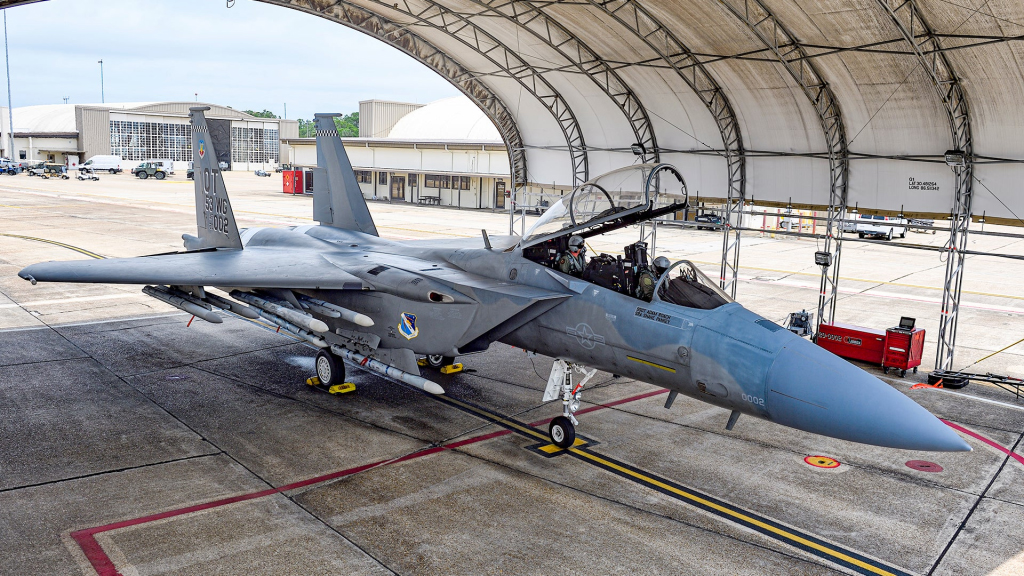The unmistakeable howl of jet fuel starters breaks the morning silence as four Eagles begin to start their engines at Eglin Air Force Base, located on the sun-soaked Florida Panhandle. While F-15 Eagles have been commonplace at Eglin for decades, these particular jets are newcomers. These are the first of the brand new F-15EX Eagle IIs, the U.S. Air Force’s latest fighters.
The USAF has an integrated team of expert testers, working on a highly aggressive schedule, to fast-track testing of the new Boeing F-15EX in order to rapidly bring it into operational service. The War Zone visited Eglin AFB to learn exactly how they’ve been able to achieve this ambition.

The F-15EX Eagle II has been procured as an off-the-shelf replacement for the USAF’s aging fleet of F-15C/D Eagles as these combat-tested fighters run out of flying hours. The Air Force sees its ‘air superiority’ Eagle fleet, the youngest of which is nearly 40-years-old, as too old to be cost-effectively maintained and are in need of replacement quickly and efficiently, with minimal impact on squadron readiness.
Procuring brand new Advanced F-15s to refresh the existing F-15C/D fleet was deemed to be the most efficient way to recapitalize the fleet. Existing Eagle units that have decades of experience with the fighter are getting factory-fresh versions of a highly mature aircraft that has a proven track record, with the added benefit of a host of new capabilities that have been infused into the jet after decades of evolution that was largely funded by the export market.
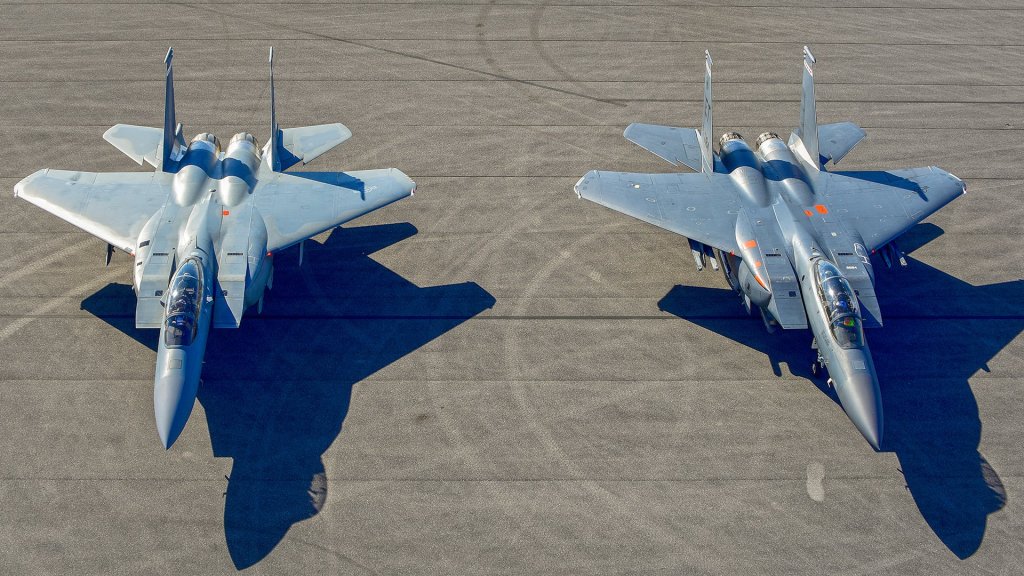
In addition, the USAF is aligning the software in its F-15EXs with its existing F-15E Strike Eagles, making for more cohesive fleets that enable aircrews to more easily convert between the two variants, with both receiving upgraded software in tandem through ‘agile’ updates.
“The Eagle has been a robust platform for 50 years now. From the maiden flight of the first YF-15A back in 1972 to the present day, the F-15 has been truly dominating in the air superiority role,” says Lt. Col. Robert Waller, commander of the 40th Flight Test Squadron (FLTS) at Eglin Air Force Base, in Florida, who spoke exclusively to The War Zone. “In the 1980s we added air-to-ground capabilities with the F-15E Strike Eagle. That added new challenges – the same payload, but additional distribution of the loads on the airframe, lots of drag, extra gas, and operations in pretty harsh environments – flying low and fast rather than high and fast. The airplane gets beaten up quite a bit in that operational environment.”
The USAF is attempting to introduce the F-15EX into service quickly and efficiently, and Lt. Col. Waller’s squadron is a critical part translating this urgency into flight-testing efforts. The 40th FLTS is the Development Test (DT) element of the F-15EX Combined Test Force (CTF) at Eglin that also includes Operational Test (OT) and it is mandated with ensuring the new Eagle II is ready and effective for operational squadrons.
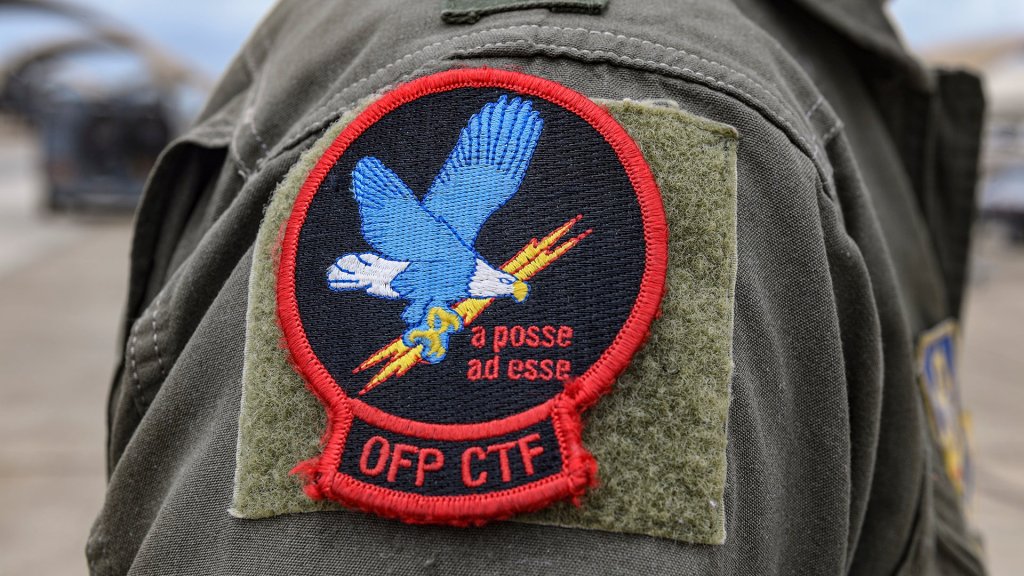
“The F-15EX provides a lot of improvements and new capabilities of both modernization and sustainment, with a more modern approach to suit the operational environment, which really led to the entire acquisition of this platform,” Waller explained. “It carries a lot of ordnance, has high fuel capacity, advanced sensor capability that includes a modern electronic warfare system that’s inherent to the platform. Pretty much everything you would want on an Eagle, or that the USAF is actively putting on Eagles, comes in the baseline F-15EX. It’s an impressive machine.”
The Air Force placed its initial order for eight new F-15EXs in 2020, and the first aircraft was formally accepted by the service on March 10, 2021, before being ferried to Eglin AFB the following day to begin a dedicated USAF flight-test program run by the CTF. To help expedite the testing needed to declare the F-15EX ready for operations, the team at Eglin leveraged previous test data from F-15 foreign military sales variants and married it up with the limited number of U.S.-only sub-systems and Operational Flight Program (OFP) software that are present on the F-15EX.
“We did two things that were pretty awesome when it came to defense acquisition,” explains Waller. “The 2016 National Defense Authorization Act [NDAA] authorized capability called the Section 804 Authorities, which has since evolved into what we now call in the Department of Defense the middle tier acquisition [MTA] framework. The F-15EX was a middle tier acquisition , so it’s an Air Force rapid prototyping capability, which is a new framework in the way we acquire hardware and software. This was something new to our execution here as a developmental test organization.”
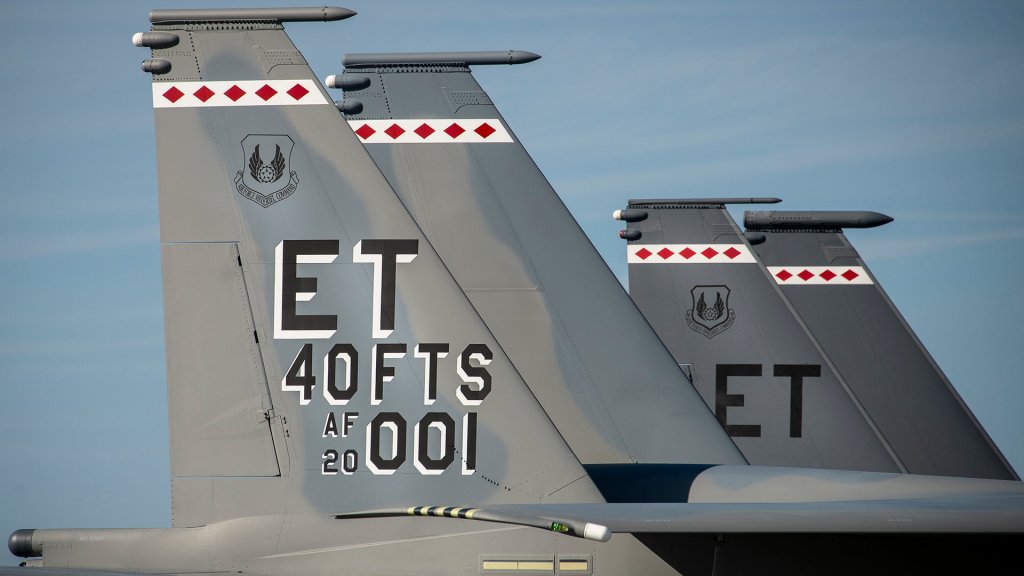
“The second factor was an aggressively scheduled, objective-based, integrated test strategy. The idea is that we tie together the acquisition, developmental test, and operational test, as one executed plan rather than the more traditional sequential approach to that series of events. This way we can start working on more of the operationally focused capabilities earlier while the developers are moving on to other evaluations in parallel. This means we can start work where it’s feasible or when low risk with the operational testers and even train mission sets significantly earlier than you would under a traditional framework.”
“We have a beginning-to-end full acquisition and test process at this one site here [at Eglin]. We have science and technology developers here from the Air Force Research Laboratory, program office representatives and the Air Force Life Cycle Management Center, developmental testers, operational testers, everybody on one site. So, it’s really easy for us to get together as integrated teams with shared facilities, shared aircraft, and shared execution, so that helps us to really expedite things.”
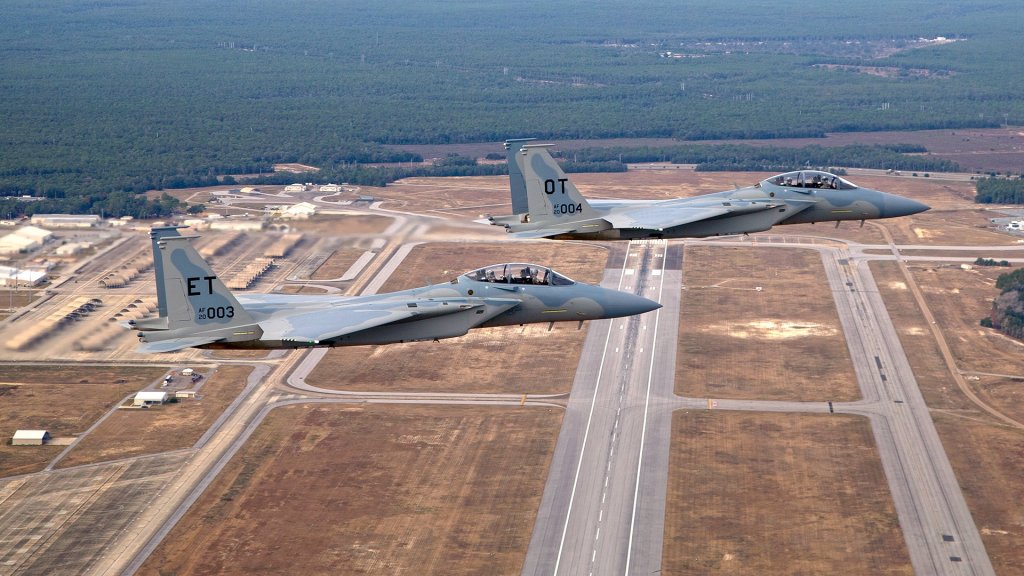
Some of the flight-test work for the Advanced F-15 over the past decade has included both Boeing and USAF testers working in unison. This included flight sciences testing of the new digital fly-by-wire system that was first introduced in the F-15SA for the Royal Saudi Air Force and which ran for six years from 2013. This work meant that the USAF test community was already very familiar with the latest production variants of the Eagle. There are still some features and operational procedures that are unique to the USAF’s F-15EXs, which means that while the introduction of the fighter is streamlined, there is still a comprehensive testing requirement.
“We had to judge what we could leverage from those foreign military sales. Our operational environment and operational use cases may not be the same as some of our partner nations [that have purchased the Advanced F-15] through a foreign military sales program,” Waller explains. “That’s something we’ve had to look at – what was procured and developed for our foreign partners for their strategic needs. Does that match the USAF use case and operational environment for our strategic needs? Those overlaps could philosophically be 100% or they could be zero. By evaluating that in our use case and our operational environment, we could see if perhaps there’s an opportunity for us to find other things we could do with the platform that perhaps our foreign partners didn’t need. If we could find those overlaps, we used them, and that helps us accelerate acquisition. If we found things that were of strategic value to our country, we had to make sure they work for our warfighters as quickly as possible.”
The direction of this test plan originated from the Joint Staff in the Pentagon and the DoD’s Joint Capabilities Integration and Development System (JCIDS) requirements generation process that assesses how different platforms and capabilities fit within joint warfighting concepts. In other words, how the USAF is going to utilize or be tasked to execute its wartime mission as a combined force with the other services. From there, Air Combat Command is the hub for the specific requirements generation around fighter aircraft for the respective System Program Offices (SPOs) to develop acquisition strategies. “It’s our job to ensure that the systems meet that intended role for our joint force,” Waller explained.

Experienced F-15E Strike Eagle pilot Gen. Mark “Grace” Kelly was the commander of Air Combat Command when the USAF initially purchased the F-15EX, and he completed conversion training in September 2021 to enable him to fly the F-15EX. “Gen. Kelly made it very clear in his public address here that the F-15EX is going to have an inherent capability that we need to put to work from day one, to include limited air-to-ground capability,” said Waller. This requirement was part of the middle tier acquisition to verify that the F-15EX can perform “certain capabilities” in both air-to-air and air-to-ground roles, something that Waller says the CTF does “every day.”
“Right now, we’re flying in whatever configuration is required for the particular test point,” explains Lt. Col. Waller. The first two F-15EXs came with Conformal Fuel Tanks (CFTs) fitted, which were previously owned [the fuel tanks] by the Air National Guard. However, the following jets off the Boeing production line have not been equipped with these tanks, although they are all plumbed to carry them. The USAF is planning to procure CFTs for its F-15EXs, although as of yet these are not on contract. You can read more about this here.
“When required to do so in accordance with the MTA goals, we fly with CFTs. We have two sets of CFTs for our EXs and when required we fit them. From a developmental test perspective, that work is about verifying weapons carriage capability – the CFTs have air-to-ground munitions stations, and when you remove the CFTs those bomb stations go with them. The fuselage shoulder stations are for air-to-air missiles. Some days you’ll see F-15EXs with no CFTs and external fuel tanks fitted like a normal F-15C configuration. You could easily see six jets in six different configurations based on the need of the test program on that particular day.”
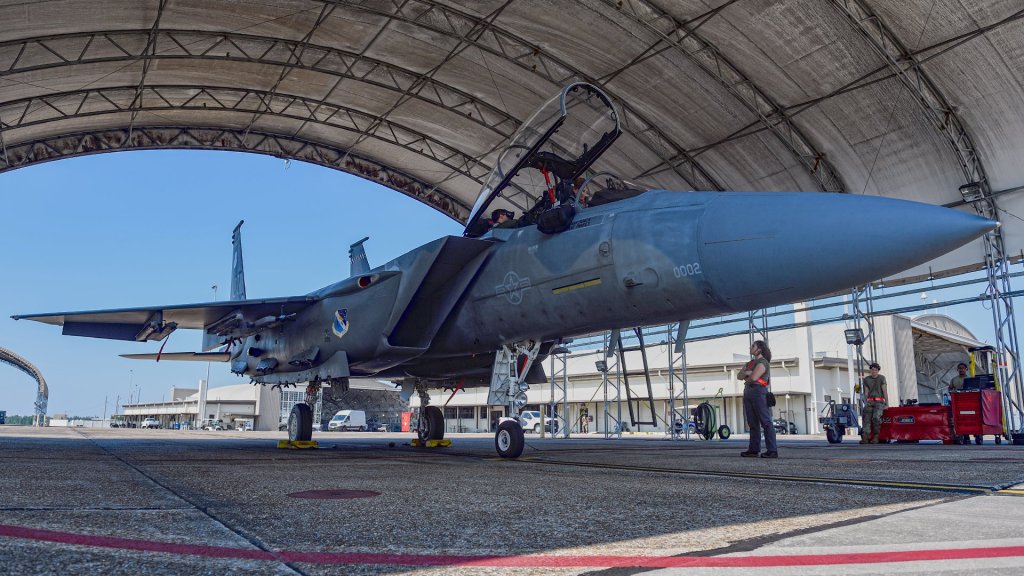
“There’s a difference between flying a jet that’s fitted with CFTs and one that isn’t. They give us a lot of extra fuel – roughly 10,000 pounds – which equates to a lot of weight, and they’re big, so they bring some drag, so you see a difference in performance. The beauty of the fly-by-wire system in the EX is that it’s optimizing to give you the same feeling from a pilot control perspective.”
“The fly-by-wire also opens up those wing pylons 1 and 9, which brings a lot of added capability in terms of extra air-to-air missile carriage. They were inherent to the original Eagle, but the risks associated with using those stations [the lateral asymmetry of stores on the two widest weapons stations] meant we stopped using those in the 1970s. That risk has been completely eliminated now with the new fly-by-wire system, which means using the outer wing stations is now routine for the F-15EX.”
“With the CTF at Eglin having grown to include six F-15EXs means we have now been able to conduct MTA requirements for four-ship operations, and now we’re into an agile software framework, which means we are already conducting modernization of the platform,” Waller explains. “Right now we’re into OFP [Operational Flight Program software] development under CD&I [Continuous Development and Integration], which is the nomenclature for OFP development for Eagle that’s now common across the F-15E and EX. We no longer have active development test on the F-15C for the active-duty, because the Air Force is divesting those aircraft.”
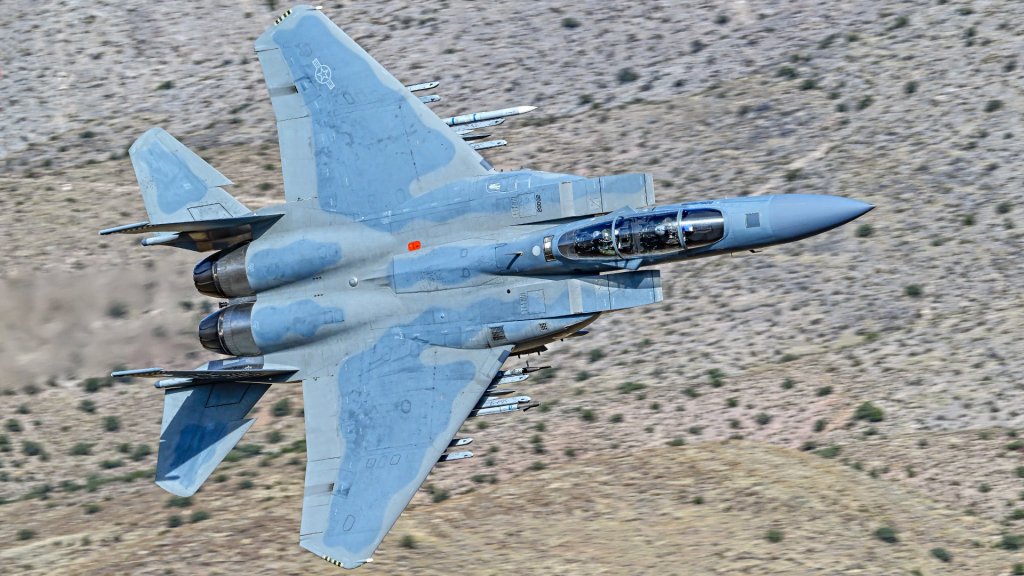
“The two F-15 variants have some different hardware configurations, but we’ve been very deliberate within the USAF to align these platforms to the max extent possible. The F-15E and F-15EX share the same Advanced Display Core Processor (ADCP II) central computer. They also have the same AN/APG-82 radar, they use the same targeting pods, the same Eagle Passive Active Warning Survivability System [EPAWSS] electronic warfare system. So, if they have common hardware as much as possible, they should have common software.”
“There’s some hardware elements that we can’t align, such as the large area display [LAD] in the F-15EX cockpit and the older display layout in the F-15E. So how we display symbology and user interface experiences will be different between the two platforms, but other than that, when it comes to inherent capabilities on the platforms, we try to align that with a common OFP as much as we can. The idea here is that if we fly a developmental test event that works on an E-model, our program offices and developers can potentially make it count for an EX as well. The same goes for operational tests. We are finding ways to become as efficient as possible.”
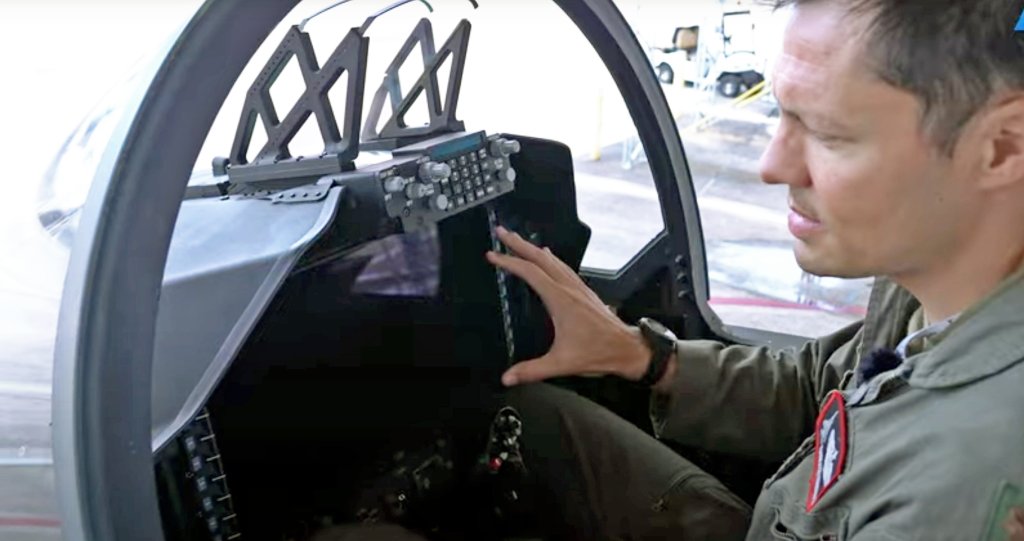
“Having the common OFP between the F-15E and the F-15EX is great for me as a pilot. Yesterday I was flying an EX, and I flew an E-model the day before. The HOTAS switches are all the same. The functionality is all the same. The sensors are all the same.”
“Across the USAF we are pushing our fighters towards a more agile framework from a software development perspective. Instead of rolling out software builds once a year with multi-year acquisition lifecycles for software for the platforms, we’re reducing that to months and in some cases engineering builds that are weeks, depending on the scope and scale of the update, with goals for a release every year for major upgrades. The aim is that if we need to fix something or field a new capability, it doesn’t take years, it takes months or weeks. The F-15 was able to field its first agile framework-developed software very quickly and we’re already on the second software build post-OFP 9.2.”

The new LAD in both the front and back cockpits of the F-15EX is a major evolution for the Eagle. “It unlocks the capability of integrating with a platform that I’ve just never had before,” Waller says. “We seamlessly execute touchscreen operations in everyday life, phones and iPads for example, and now it’s taking the jet to a whole new capability.”
“A modern user interface really does change how you use the airplane, it almost feels like the opportunities are endless because I’ve grown up with push buttons and HOTAS [Hands-On Throttle And Stick controls]. The integration with the LAD is different with things like the touch screen. It lets me make bigger screens, smaller screens, rearrange my screens, put what used to be on the left now in the middle or on the right. It unlocks degrees of freedom that I never knew existed, and it has exponential growth and capability from a human-machine interfacing perspective. Now we get to leverage experience from other platforms that have developed that, like the F-35, and the idea is to learn from them, but our operational needs, our strategic needs, may be different, so now we have different things we can do with it.”
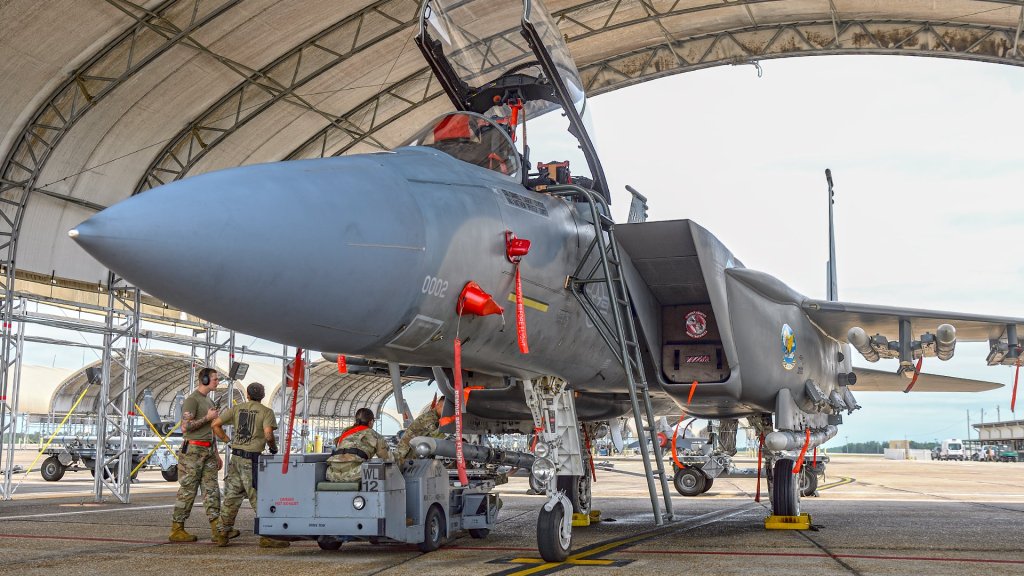
“When I think back to when I first flew the F-15C, we had the Vertical Situation Display in the cockpit for our radar and a radar warning receiver. We moved into multifunction displays and push buttons in the F-15E, and now with the F-15EX it’s touchscreen and we have a whole new technology development line of activity.”
“There’s been a lot of experimentation with the LAD by experienced F-15 pilots like me, and it’s been a deliberate approach to executing the developmental testing.” The F-15EX CTF is actively working to evaluate potential modernization solutions for the cockpit, such as work being done by the Air Force Research Laboratory and other science and technology developers, although no specific improvements that might be desired for the LAD have yet to be revealed.
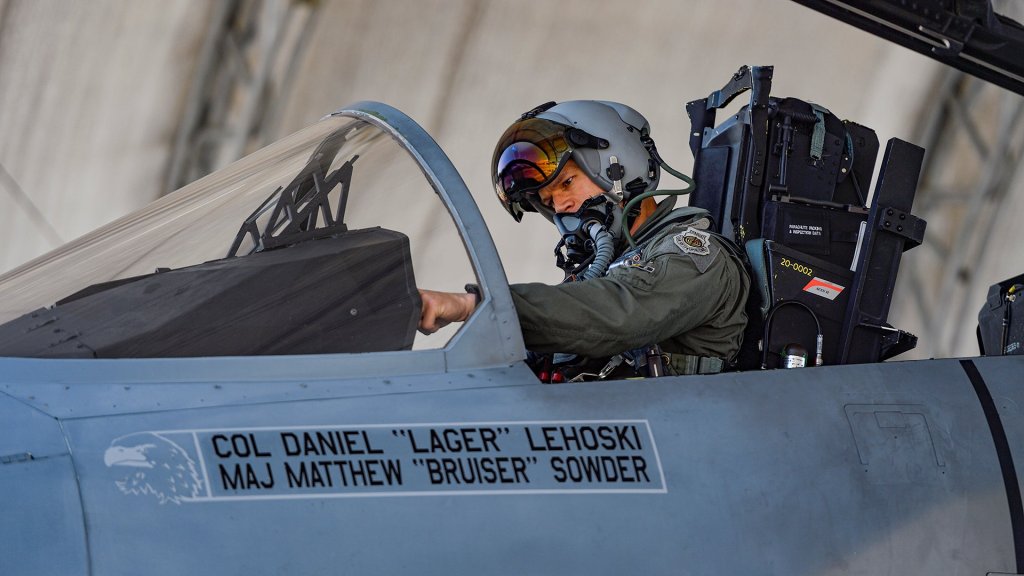
There are other improvements in the F-15EX cockpit too. Unlike the F-15E, where the aircraft is only equipped for the pilot to wear a Joint Helmet-Mounted Cueing System (JHMCS), both the pilot and Weapon System Operator (WSO) in the F-15EX can wear a helmet mounted display in the form of the new Digital Joint Helmet-Mounted Cueing System (DJHMCS). This means that the front and back seat crew can both see targeting data and other info, such as the location of other contacts in augmented reality via their helmet visor, as well as being able to use symbology to get each others’ eyes onto a target or item of interest.
“DJHMCS is literally a hardware swap out with the same user interface [as JHMCS]. They’ve shifted some of the weight associated with the helmet mounted display to the back of the helmet so that its balance is better on your neck. It’s a different piece of hardware, but it integrates to the platform in the same way and provides us the same capability [as JHMCS].”
The USAF has executed a highly accelerated test program for the F-15EX, geared towards minimizing the transition burden from the F-15C/D to the new Eagle II. This meant that the first operational unit, the 142nd Wing, Oregon Air National Guard in Portland, was ready to begin its transition to the F-15EX under an accelerated service entry plan with the first example arriving at its Portland base on June 6, 2024.
Editor’s note: The sponsor had no editorial involvement in this article.
Contact the editor: tyler@twz.com
